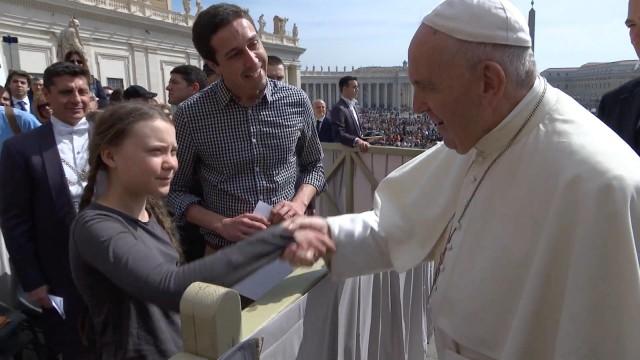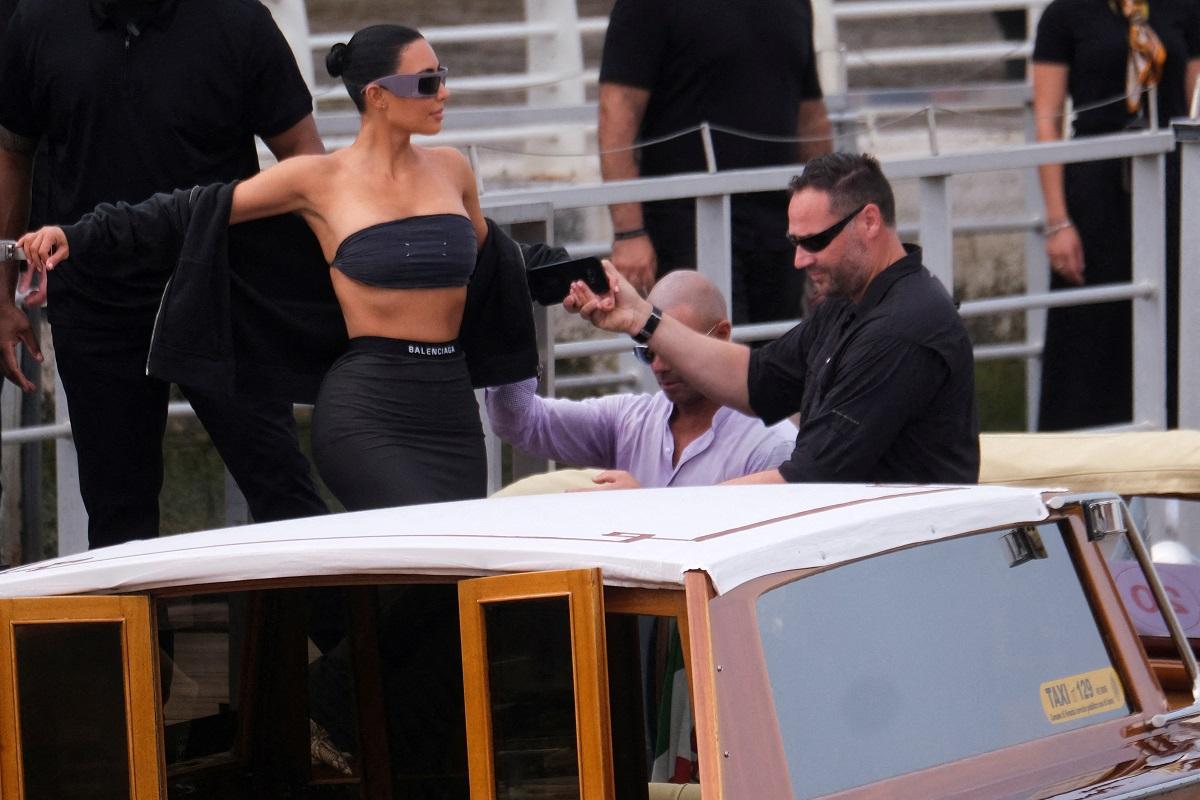
Upgrade to High-Speed Internet for only ₱1499/month!
Enjoy up to 100 Mbps fiber broadband, perfect for browsing, streaming, and gaming.
Visit Suniway.ph to learn
R
eligion is barely mentioned when talking about climate change, but at the 29th United Nations Conference of Parties in Baku, Azerbaijan last November, the faith sector had quite the presence.
In the pavilion space stood the faith corner where every day, leaders of various religions from across the world discussed their role and responsibility in solving the climate crisis. Among them was Bishop Gerry Alminaza of Negros Occidental’s Diocese of San Carlos.
The vice president of Caritas Philippines, was a delegate of the Philippine Church at COP29, contributing to the global climate discussions and bringing front and center the experiences and perspectives of vulnerable Filipino communities.
But Alminaza, also known as the bishop-champion for integral ecology of the Catholic Bishop Conference of the Philippines (CBCP), proved to be as well-versed on things like renewable energy, climate justice, and even climate finance. In fact, Alminaza sat in panels with technical experts and policy makers about such things.
It’s pleasantly surprising to learn that the Philippine Catholic Church had a delegation to COP29, but it’s actually not unheard of. This is Alminaza’s second time at a COP, where no less than the Holy See was represent the Vatican.
“People of faith have more motivation, more inspiration, more reason to really care for the environment,” Alminaza told GMA News Online back in Baku last November. “Because if we believe that God is the creator and we are all created by God, we owe it to God as our expression of our love for him to really care for one another — not just among human beings but the rest of creation.”
He adds, “this kind of interrelatedness, which is also shared by other religions, is an important starting point” in climate discussions.
T
he Catholic Church’s role in climate action began as early as 1988, when the CBCP issued its first pastoral letter on ecology and the environment. According to Bishop Pablo Virgilio David, that particular statement is "globally recognized as the very first magisterial pastoral letter issued by a bishop's conference."
But it wasn’t until 2015, when Pope Francis published the Laudato Si that really got the church moving.
The Laudato Si is an encyclical, an official church teaching on integral ecology, which makes it “a must,” says Lou Arsenio, the coordinator of the Integral Ecology Ministry of the Roman Catholic Archdiocese of Manila (RCAM). “Things have to be done along the lines of this teaching, at different levels of the church,” she explains.
But the Laudato Si isn’t just any other teaching of the Roman Catholic Church. It is its first official teaching on integral ecology, relating the Catholic faith with caring for Planet Earth, or what Pope Francis calls, “our common home.”
It was published a few months ahead of COP21 which was held in Paris, where nearly 200 countries signed the legally binding Paris agreement that aims to limit global warming between 1.5 and 2C above pre-industrial levels.
In fact, the Laudato Si “was conceptualized as a statement of the Vatican to COP21,” says Arsenio. And when it was released, “naging booster talaga ‘yon para sa mga simbahan.”
Climate activist Swedish teenager Greta Thunberg shakes hands with Pope Francis during the weekly audience at Saint Peter's Square at the Vatican in this still image taken from a video, April 17, 2019. Vatican Media/Handout via REUTERS
Suddenly, ecology ministries sprouted off small ecology desks, or social desks where various issues like gender, poverty, children and environment are lumped together.
RCAM’s Integral Ecology Ministry is among the pioneers in the world, having been set up in January 2005, a full 10 years ahead of the Laudato Si and the Paris Agreement.
“Kaya when the Laudato Si came out, talagang na-solidify yung aming conviction that we are doing the right thing,”Arsenio says. What they were doing was organizing capacity-building of the parishes and Catholic institutions of the Archdiocese of Manila towards becoming responsible stewards and co-existence with co-creatures of God in our common home.”
I
ntegral ecology, Arsenio says, touches on all aspects of human life. “From the time you wake up to the time you rest in the evening, kung titingnan mo 'yung iyong activities, you [rely and] get resources from the Earth. And [it also looks at] the impact on earth every time you extract from it.”
That means realizing where your breakfast comes from and where your leftovers go to; understanding our mobile phones aren’t just objects that allow us to engage in social media. “Saan ba nanggagaling 'yung materials para sa [mobile and laptop]? Sa mining ba? Ano ang impact ng mining sa environment and to the people’s lives and livelihoods,” Arsenio asks.
It sounds like a real buzzkill, but taking care of planet Earth, which is exactly what the climate crisis demands of us, is “a practice of faith,” Arsenio says, pointing to the first two lines of the Apostle’s Creed: “I believe in God the Father Almighty, creator of heaven and earth.”
“Creator of heaven and Earth,” she emphasizes. “How do we practice that belief? Shouldn’t it be practiced in the way we take care of creation?”
She reflects on the impact of various Holy Week activities on the environment: “Ano ‘yung ginagamit sa procession? Palaging kandila. Saan ba nanggaling 'yung kandila? Minsan sa haba ng prosesyon, nagdadala tayo ng mga bote, nagdadala kung ano-ano. Pagkatapos, basura na. Paano mo masasabi 'yung iyong observance, 'yung penitensya ng stations of the cross, ay kaaya-aya kung hindi mo naman inalagaan ang kalikasan?”
This Holy Week, she suggests using solar lamps instead of candles, becoming conscious of the waste we generate, decluttering and donating our excess, and “kung pwede namang lakarin [ang Visit Iglesia] especially kung bata-bata ka pa naman — exercise din ‘yun.”
It's minuscule, especially if you look at it at the individual level.
In fact, a recent study by the World Resources Institute (WRI) “reveals that efforts focused exclusively on changing behaviors, and not the overarching systems around them, only achieve about one-tenth of its emissions-reduction potential.”
According to the WRI “attempting these changes without systemic support could only help reduce 10% of what's possible.” The remaining 90% depends on governments, businesses and our own collective action to make sustainable choices more accessible for everyone, it said.
B
ut JL Algo, deputy executive director for programs and campaigns of non-profit Living Laudato Si Philippines (LLSP) points out something important: “The Philippines is the third biggest Catholic country in the world in terms of population.”
Imagine the environmental impact if each of the 85M Filipino Catholics take on small, individual pro-climate actions. It doesn’t sound so minuscule now, does it?
It is exactly the reason why Algo and environmentalist and human rights advocate Rodne Galicha established LLSP in 2018.
“Climate change is a technical issue but perhaps there's a way to present it in a more moral, emotional, human, and human manner,” he says.
The NGO works closely with the CBCP, other faith-based organizations, and educational institutions for its three longstanding campaigns: Strengthening ecological education, strengthening environmental policies, and perhaps the biggest and most difficult of the three, getting the Catholic community in the Philippines to redirect their current investments and other financial assets from ecologically harmful activities.
Divesting from fossil fuels is among CBCP's 10 action points for its Laudato Si' Campaign first expressed in 2019.
In 2020, Archdiocese of Manila apostolic administrator Bishop Broderick Pabillo echoed the divestment plan and called on the country's banks to stop funding coal-fired thermal plants in the Philippines.
The CBCP reiterated its commitment in a 2022 pastoral letter, saying it will “examine all banks and institutions in whom we have entrusted financial resources…use our position as shareholders, clients, or stakeholders of financial institutions in and beyond the Philippines” and “without clear commitments and policies from these banks to divest from fossil fuels, we commit to withdraw all our resources that are with them not later than 2025.”
The pastoral letter also mentioned rejecting donations from mining and other destructive industries.
Arsenio said the CBCP upheld this commitment on divestment during the plenary council last January, which Alminaza said is slowly gaining traction. “Nag-a-ask na sila ng dialogue,” he said, adding he attended meetings with shareholders, who were all surprised with his presence.
“Hindi nila in-expect isang obispo duon magsalita sa open forum. But we spoke and appealed [for them] to consider how money is being spent, given the escalating climate crisis and what that entails to finances. We really foresee na magiging stranded asset 'yung investment in coal kasi eventually, mag-pha-phase out siya,” he said.
But Algo says, “there hasn't been a lot of progress in divestment.” He mentions the current rotational set up of bishops' assignments, which makes them “unaware of their diocese's involvement and [financial] portfolio.”
“Many of them were surprised that their parish has investments in so-and-so companies. Of course we cannot expect bishops to have financial literacy because that's not exactly what bishops do but that is also part of the problem. They need to be aware of where their diocese's money is,” he said.
As LLSP continues to work with local Catholic institutions for their divestment strategies, showing them that sustainable investments can also bring stable cash flow for church operations like disaster relief and rehabilitation, Algo acknowledges: "Divestment is a long-term thing. You can't just divest in just a month or a year's time because you also need money to fund church operations.”
For the CBCP, this is where the power of the lay people come in. In Baku, Alminaza said Catholics have not only the right but the duty to call out their parishes if they see something ecologically amiss.
“We are part of the church. The lay people should be given more role and participation in the decision-making and the decision taking. Dapat kasama kayo kasi tayo ang simbahan.”
He echoed Bishop David's statement at the press conference following their July 2024 Plenary Assembly: "If you know of any bishop or diocese that is probably accepting donations from specific businesses or industries that are involved in destructive, you can bring it to our attention so we can do our part."
M
eanwhile, other things being done. The CBCP has endorsed and supported the 10M Solar Rooftop Challenge, a multi-sectoral campaign with representatives from the church, the academe, governments, and civil society organizations.
Alminaza is also leading the charge toward renewable energy in Negros Occidental. “I am among the conveners for the REpower Negros. Eventually, the four dioceses made a collective statement promoting renewable energy and opposing fossil fuels. To walk the talk, we decided to engage in solar energy,” he proudly said.
“Using the network of the church, we are calling for people to be involved. It’s empowering. It’s making people participate and take responsibility for our future and for our climate,” Alminaza said, adding the diocese of Maasin, in Southern Leyte, has been recognized by the Vatican as the first diocese in the entire Roman Catholic Church to completely switch to solar energy.
Arsenio and RCAM have not let up with their climate action efforts, involving and teaching communities how to care for, well, our common home. In 2012, together with scientists from the DENR and officials from the DILG, they planted 200 mangroves in Baseco.
Last year, they returned to the mangrove site to see if they can revive the program. A parish already is in place in the area, which she says it can take the role of the steward in keeping the project running and operational and in taking care of the community.
“Given the EPR law, we can teach [the community] livelihood programs, like teaching them how to make eco bricks from plastic waste and then selling those to recyclers,” she continues. “Para mabawasan din ang basura.”
“They can even construct plant boxes [from them] for their urban gardening for food security,” she continues, adding other ecological livelihood programs examples like plastic recycling through weaving of used plastic straws into basket or bags, crocheting of plastic sando bags into baskets, pouches, bags and others.
Saying Catholics should realize that taking care of the planet and faith go together, Arsenio looks at the small individual climate actions and says they are not the end goal. Instead, they should enable bigger ecological conversion which “should be part of our Lenten observance.”
“Tingnan natin ‘yong mga practices natin because the kind of lifestyle we have dictates the situation of our planet,” she continues. When full ecological conversion takes place, then perhaps our planet stands a better chance at solving climate change.
Meanwhile, Alminaza echoes what scientists and experts having been saying all along, "In solving the climate crisis, we are all in this together." — CDC, GMA Integrated News

 2 months ago
23
2 months ago
23




